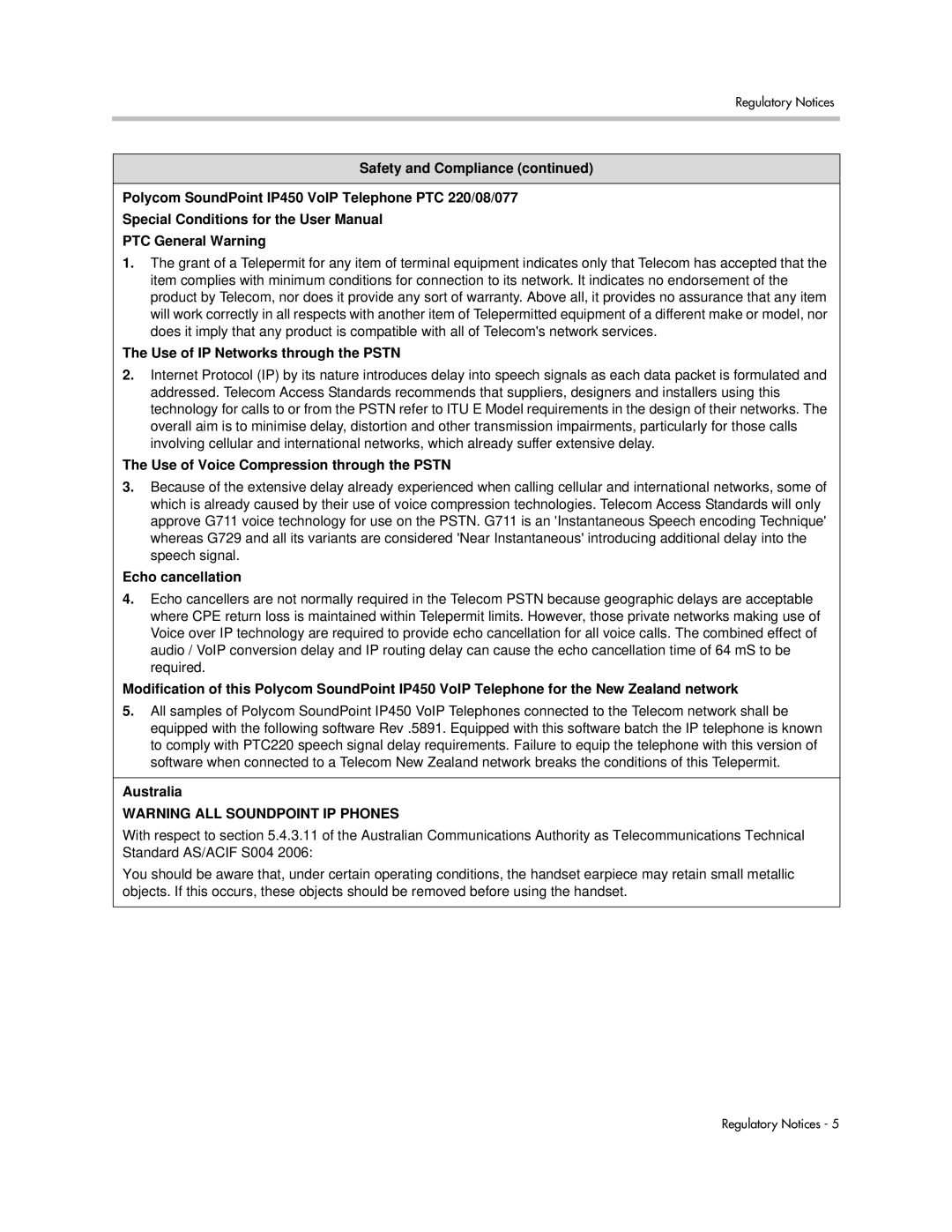
Regulatory Notices
Safety and Compliance (continued)
Polycom SoundPoint IP450 VoIP Telephone PTC 220/08/077
Special Conditions for the User Manual
PTC General Warning
1.The grant of a Telepermit for any item of terminal equipment indicates only that Telecom has accepted that the item complies with minimum conditions for connection to its network. It indicates no endorsement of the product by Telecom, nor does it provide any sort of warranty. Above all, it provides no assurance that any item will work correctly in all respects with another item of Telepermitted equipment of a different make or model, nor does it imply that any product is compatible with all of Telecom's network services.
The Use of IP Networks through the PSTN
2.Internet Protocol (IP) by its nature introduces delay into speech signals as each data packet is formulated and addressed. Telecom Access Standards recommends that suppliers, designers and installers using this technology for calls to or from the PSTN refer to ITU E Model requirements in the design of their networks. The overall aim is to minimise delay, distortion and other transmission impairments, particularly for those calls involving cellular and international networks, which already suffer extensive delay.
The Use of Voice Compression through the PSTN
3.Because of the extensive delay already experienced when calling cellular and international networks, some of which is already caused by their use of voice compression technologies. Telecom Access Standards will only approve G711 voice technology for use on the PSTN. G711 is an 'Instantaneous Speech encoding Technique' whereas G729 and all its variants are considered 'Near Instantaneous' introducing additional delay into the speech signal.
Echo cancellation
4.Echo cancellers are not normally required in the Telecom PSTN because geographic delays are acceptable where CPE return loss is maintained within Telepermit limits. However, those private networks making use of Voice over IP technology are required to provide echo cancellation for all voice calls. The combined effect of audio / VoIP conversion delay and IP routing delay can cause the echo cancellation time of 64 mS to be required.
Modification of this Polycom SoundPoint IP450 VoIP Telephone for the New Zealand network
5.All samples of Polycom SoundPoint IP450 VoIP Telephones connected to the Telecom network shall be equipped with the following software Rev .5891. Equipped with this software batch the IP telephone is known to comply with PTC220 speech signal delay requirements. Failure to equip the telephone with this version of software when connected to a Telecom New Zealand network breaks the conditions of this Telepermit.
Australia
WARNING ALL SOUNDPOINT IP PHONES
With respect to section 5.4.3.11 of the Australian Communications Authority as Telecommunications Technical Standard AS/ACIF S004 2006:
You should be aware that, under certain operating conditions, the handset earpiece may retain small metallic objects. If this occurs, these objects should be removed before using the handset.
Regulatory Notices - 5
